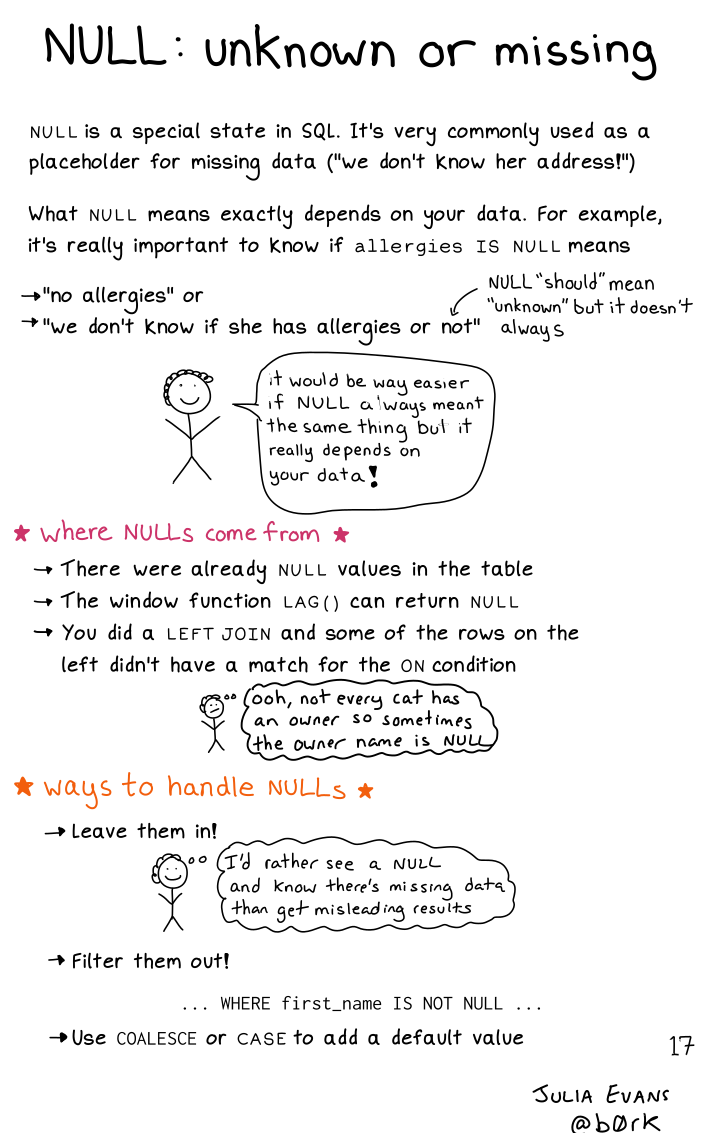
Here's a preview from my zine, Become a SELECT Star! If you want to see more comics like this, sign up for my saturday comics newsletter or browse more comics!
 get the zine!
get the zine!
read the transcript!
NULL is a special state in SQL. It’s very commonly used as a placeholder for missing data (“we don’t know her address!”)
What NULL means exactly depends on your data. For example, it’s really important to know if allergies IS NULL means:
- “no allergies” or
- “we don’t know if she has allergies or not”
NULL “should” mean “unknown” but it doesn’t always.
smiling stick figure with curly hair: it would be easier if NULL always meant the same thing but it really depends on your data!
where NULLs come from
- There were already
NULLvalues in the table - The window function
LAG()can returnNULL - You did a
LEFT JOINand some of the rows on the left didn’t have a match for
tiny pensive stick figure with curly hair: ooh, not very cat has an owner so sometimes the owner name is NULL
ways to handle NULL s *
- Leave them in!
smiling stick figure with curly hair: I’d rather see a NULL and know there’s missing data than get misleading results
-
Filter them out!
... WHERE first_name IS NOT NULL ... -
Use
COALESCEorCASEto add a default value